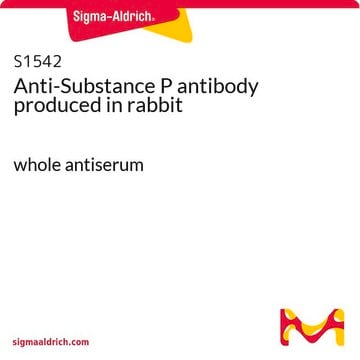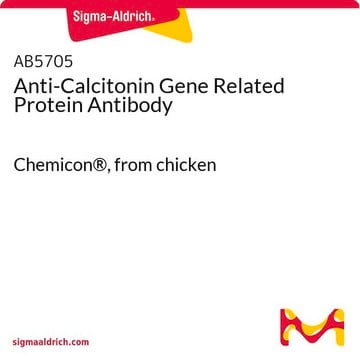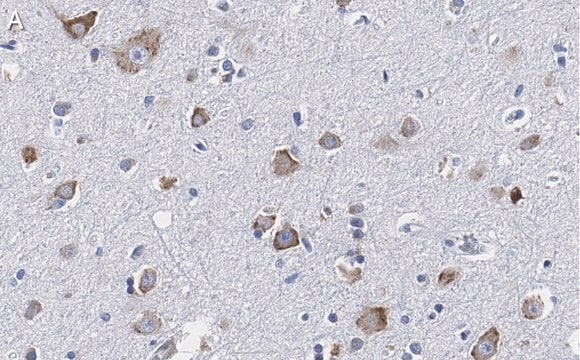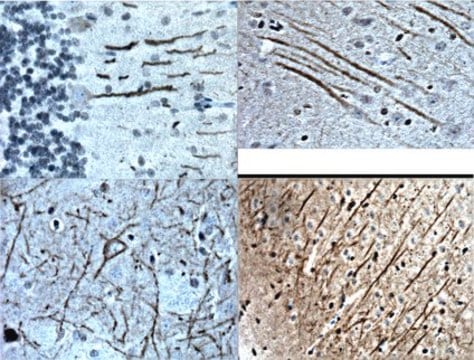AB1566
Anti-Substance P Antibody, pain
serum, Chemicon®
Synonim(y):
Anty-Hs.2563, Anty-NK2, Anty-NKNA, Anty-PNPK, Anty-TAC2
Wybierz wielkość
1750,00 zł
Przewidywany termin wysyłki22 kwietnia 2025Szczegóły
Wybierz wielkość
About This Item
1750,00 zł
Przewidywany termin wysyłki22 kwietnia 2025Szczegóły
Polecane produkty
pochodzenie biologiczne
rabbit
Poziom jakości
forma przeciwciała
serum
rodzaj przeciwciała
primary antibodies
klon
polyclonal
reaktywność gatunkowa
human, mouse, rat
producent / nazwa handlowa
Chemicon®
metody
immunohistochemistry: suitable (paraffin)
radioimmunoassay: suitable
numer dostępu NCBI
numer dostępu UniProt
Warunki transportu
dry ice
docelowa modyfikacja potranslacyjna
unmodified
informacje o genach
human ... TAC1(6863)
Opis ogólny
Specyficzność
Zastosowanie
1:10,000 dilution from a previous lot was used in radioimmunioassay. 80% binding detects at least 5 pg/mL.
Optimal working dilutions must be determined by the end user.
Neuroscience
Neuroinflammation & Pain
Jakość
Substance P (AB1566) representative staining pattern/morphology in Alzheimer’s brain. Tissue pretreated with Citrate pH6.0, antigen retrieval. Antibody diluted to 1:100.
IHC-Paraffin Staining With Citrate pH 6.0 Epitope Retrieval: Alzheimer’s Brain.
Postać fizyczna
Przechowywanie i stabilność
Komentarz do analizy
Spinal Cord.
Inne uwagi
Informacje prawne
Oświadczenie o zrzeczeniu się odpowiedzialności
Nie możesz znaleźć właściwego produktu?
Wypróbuj nasz Narzędzie selektora produktów.
polecane
Kod klasy składowania
10 - Combustible liquids
Klasa zagrożenia wodnego (WGK)
WGK 1
Certyfikaty analizy (CoA)
Poszukaj Certyfikaty analizy (CoA), wpisując numer partii/serii produktów. Numery serii i partii można znaleźć na etykiecie produktu po słowach „seria” lub „partia”.
Masz już ten produkt?
Dokumenty związane z niedawno zakupionymi produktami zostały zamieszczone w Bibliotece dokumentów.
Active Filters
Nasz zespół naukowców ma doświadczenie we wszystkich obszarach badań, w tym w naukach przyrodniczych, materiałoznawstwie, syntezie chemicznej, chromatografii, analityce i wielu innych dziedzinach.
Skontaktuj się z zespołem ds. pomocy technicznej








